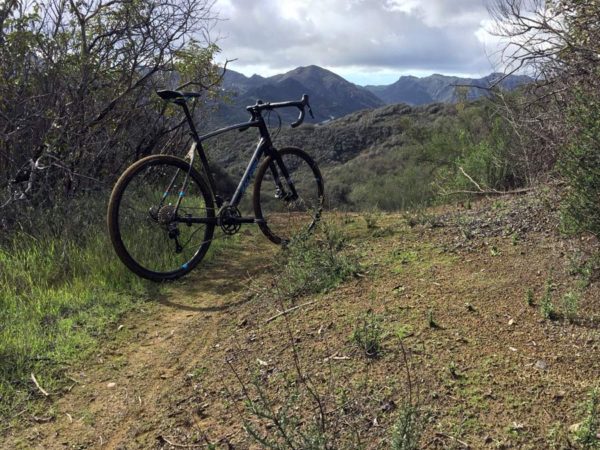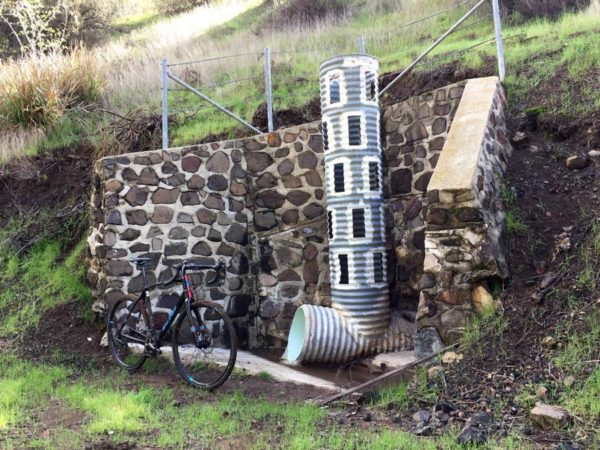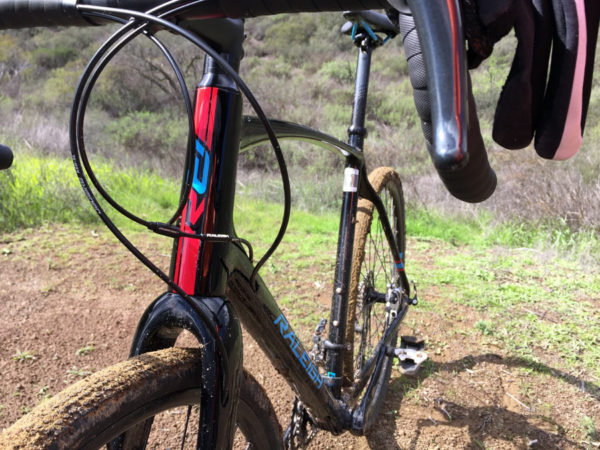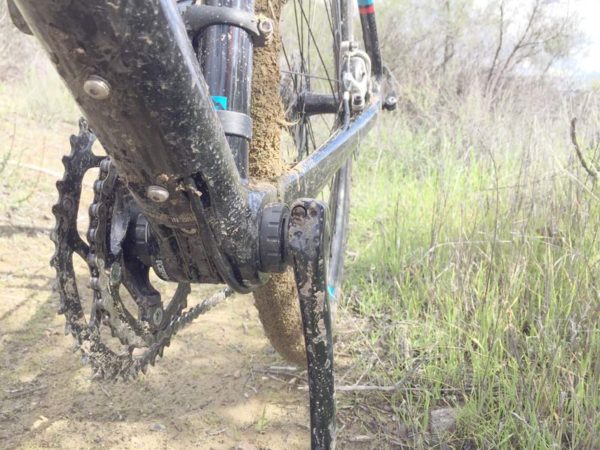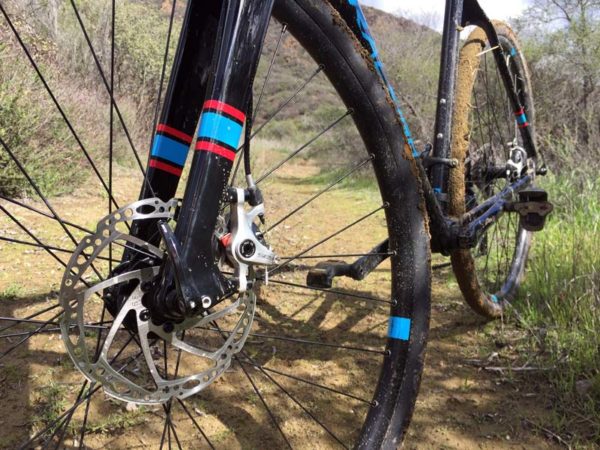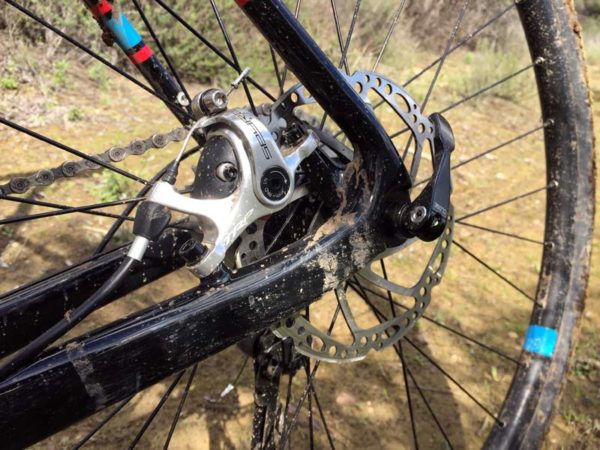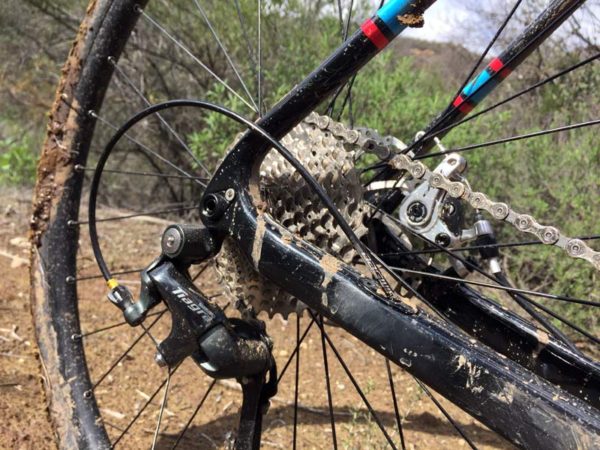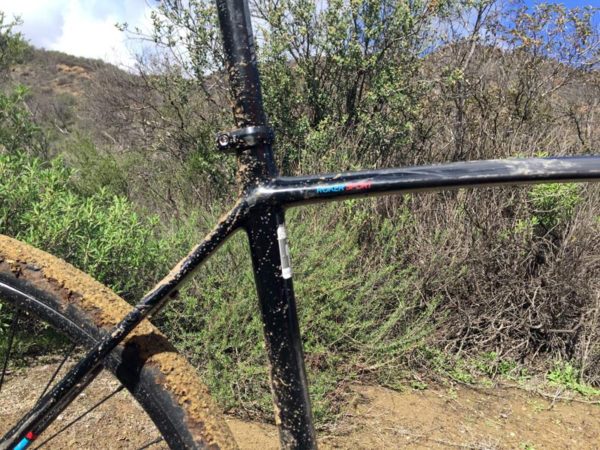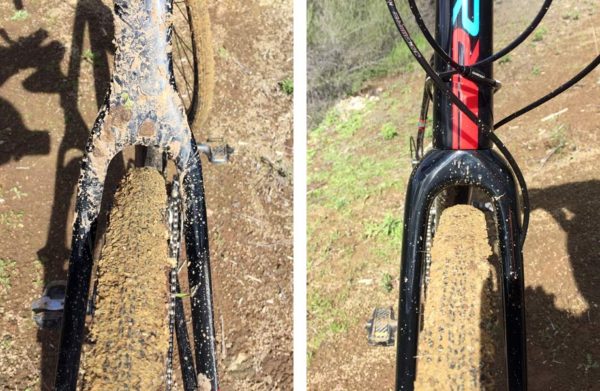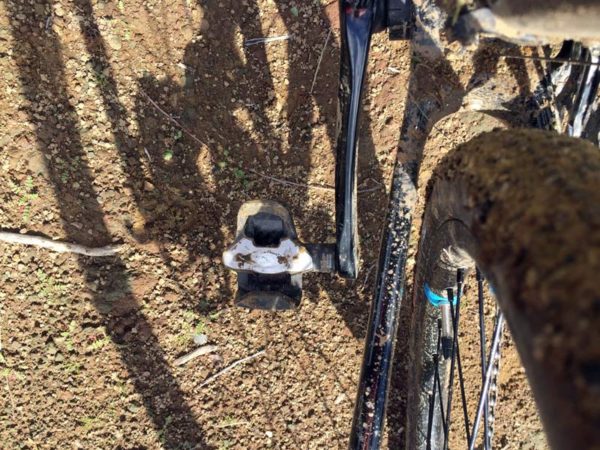Raleigh had several of their new road bikes on display at Winter PressCamp, but I needed to grab something quick to catch the group ride and the Roker looked like it would fit. At first glance, and based on the spec level, I thought the Roker was an alloy bike. It’s stiff like one, and even wrapping knuckles on the top tube sounded alloy-ey. But it’s all carbon, and it’s darn solid. And it’s relatively cheap, getting on/off the roads with a very upgrade worthy frame and a parts mix that’ll carry you for a while before the inevitable upgrade train toots its horn.
As the group ride pulled out and I realized there was no hope of catching them, I pulled off on the first dirt access road I could find to give the Roker a proper ride…
The beauty of taking random rights and lefts is you happen upon things like this. Art tucked into odd nooks and crannies. Forgotten barns. Hidden views. It’s why most of my “road” rides are aboard something with tires larger than 30mm.
The Roker has a tapered headtube and steerer with full carbon fork. The shaped top tube leading into it helps stiffen the front end for a strong steering response, and the curve and flattened mid section makes shouldering possible if you wanted to use this for the odd cross ride (or just getting across a river). All cables and hoses, even the front brake, are internal.
They pop out underneath, just in front of the bottom bracket shell, then re-enter the chainstays. It uses a standard threaded bottom bracket shell, though it’s sized like a PF30 one for max stiffness and power transfer. Note the third water bottle cage mount underneath the downtube.
Thru axles and fender mounts are found front…
…and rear, though the rear ones are placed on the inside of the seatstays for a cleaner look.
The seatstays are flattened and managed to mute a path that had been deeply pockmarked by horse hoof prints from edge to edge. This textured surface was not enjoyable, but the Roker made it manageable. And tolerable. The bike held its line at a variety of speeds even as the ground tried its best to throw it side to side, up and down. And if it can tackle that, it should be able to handle any typical gravel road you would ride.
The Roker Sport comes with Clement X’Plor MSO 60tpi 700×36 tires, but they say 40mm tires fit with no problem. Frame/crank arm clearance is ample, too, making plenty of room for a Stages or similar power meter.
The Roker Sport retails for $2,499 (on sale for $2,299 as of this post going live) and comes with a Shimano Tiagra 2×10 drivetrain. It got the job done without drama, a testament to the trickled down refinement that graces all of Shimano’s groups nowadays. Beyond the tires, three small spec standouts that improve the value proposition are TRP Spyre brakes (yes, they’re mechanical, but they’re the best mechanical brakes we’ve tried), tubeless-ready double-walled Weinmann rims and Raleigh’s flared handlebar. I didn’t use the drops much, but having that extra width and wrist clearance when I did was nice. That said, long term, I’d put a carbon bar on there like the new Easton EC70 AR with a similar flare. And a carbon seatpost to help damp more vibration. Raleigh wisely used a 27.2mm seatpost diameter, so switching to carbon would help a lot IMO.
Sitting just above the Sport model is the Comp with SRAM Rival 1 Hydro group for an extra $500, 40mm tires, and slightly better hubs. And both come with the same carbon frame and fork, which is the real gem in the equation. For a solid starting gravel bike that provides room to grow and hauls butt on the pavement, too, the Raleigh Roker is worth test ride.
